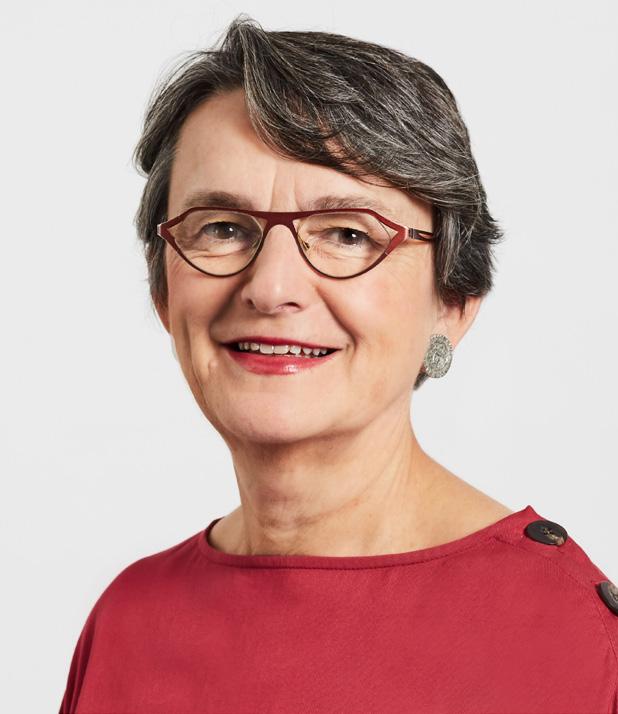
5 minute read
Raising the bar for primary and community health care
CONJOINT PROFESSOR ANNE DUGGAN Chief Medical Officer, Australian Commission on Safety and Quality in Health Care
Australia’s first National Safety and Quality Primary and Community Healthcare Standards (the Standards) are set to transform the healthcare landscape by providing the right framework to raise the bar across the sector.
Since the Hon Greg Hunt MP, Minister for Health and Aged Care, launched the Standards in October 2021, they have garnered significant interest from local health services across the country.
Over the coming months, the Australian Commission on Safety and Quality in Health Care (the Commission) is gearing up to help healthcare services embed the Standards into everyday practice, where safety and quality improvements may be realised.
A key driver will be accreditation, where a healthcare service is independently assessed to verify implementation of the Standards, which provides important assurances to the community that safety and quality systems are in place.
While accreditation will be voluntary, in some instances regulators or funders of healthcare services, such as state and territory health departments, may also require healthcare services to be accredited to the Standards as part of licensing and contractual arrangements.
Primary and community healthcare services that are likely to become accredited to the national Standards can generally be categorised into three main groups — those new to standards, those aligned with sector-specific standards, and those who will transition from the National Safety and Quality Health Service (NSQHS) Standards.
At the Commission, we recognise the diversity in the sector and the differing stages of readiness and engagement, and we are implementing a flexible approach to support all healthcare services to embed the Standards into day-to-day practice.

Categories of implementation 1. New to standards and accreditation
Healthcare services new to standards and accreditation are unlikely to have participated in an independent safety and quality accreditation assessment or to have reviewed their healthcare service through a safety and quality assurance lens. Unless required to do so by a regulator or funder, these services may not immediately decide to seek formal accreditation to the Standards.
These healthcare services will be encouraged to take an educative approach by using the Standards as a framework to review their current practices and identify areas for improvement. In some instances, healthcare providers may record time spent reviewing and implementing the Standards in their place of practice as part of their continuing professional development (CPD). The Commission will be releasing comprehensive resources to provide detailed guidance and support to these services.
2. Familiar with standards
A number of primary and community healthcare services are accredited to sector-specific standards, such as the Aged Care Standards and National Disability Insurance Scheme Practice Standards, or profession-specific standards. In many instances, accreditation to various standards is required to access particular funding and incentive programs.
For healthcare services already accredited to profession-specific standards, such as general practice and community pharmacy, there will be no change. However, at the Commission we see real advantages for patients in greater alignment between profession-specific standards and the Primary and Community Healthcare Standards. The Commission will be working with these professional organisations on a nationally consistent approach. We will also be investigating ways to reduce the administrative burden associated with implementing multiple sets of standards.
3.Looking to transition from the NSQHS Standards
More than 3,100 public and private primary and community healthcare services across the country are currently accredited to the NSQHS Standards. Feedback from these healthcare services is that they are keen to transition to the new Standards as soon as possible.
From an operational perspective, transitioning to the Primary and Community Healthcare Standards will be fairly straightforward due to the significant alignment between the two sets of standards. The Commission will release resources to help services demonstrate compliance by mapping existing safety and quality systems to the new Standards. Healthcare services will be able to transition at the time reaccreditation assessments to the NSQHS Standards are due.
For healthcare services accredited to the NSQHS Standards as part of contractual or licensing requirements, the relevant authority will advise whether accreditation to the Standards will be accepted to meet requirements.
Striving for continuous improvement
The new Standards will enable a focus on creating a culture of continuous improvement and partnering with consumers within primary and community health care.
As Minister Hunt explained: “They [the Standards] are about making sure — in a simple, easy to understand, rigorous but not onerous set of conditions and standards — that our primary and community care sector is able to care for the patient, to do it safely and to do it in a way which enhances their professional standing and pride, which is already at the very highest level.” ha
For more information about the Standards and to access resources, visit safetyandquality.gov.au/pchs or contact the Safety and Quality Advice Centre via advicecentre@safetyandquality.gov.au.










